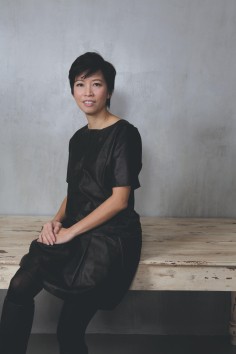
Luxury goods distributors adapt in China as brands reclaim sales rights
Distributors of designer goods have had to change the way they do business as top brands move to reassert control over sales channels
Distributors of luxury brand products in the mainland are hurting despite increased demand for products like designer handbags and watches.

Designers such as Gucci, Coach, Cartier and Prada had started to reclaim the handling of their products in the mainland from the brand management and distribution company that had first brought the brands to the mainland 20 years ago.
ImagineX is a distributor of high fashion products in Asia. Founded in 1992, it is part of the Lane Crawford Joyce Group, which is wholly owned by Peter Woo Kwong-ching, chairman of Hong Kong-listed property company Wheelock & Co.
It helps foreign luxury brands open and run shops, and market and localise products to the tastes of mainland customers. It also recruits and trains sales staff and offers after-sales service.
It makes its profit by purchasing luxury goods at a discount and then selling them to local customers with a suitable markup.
But the market has changed. The mainland has become an increasingly profitable place for luxury firms, and Beijing loosened restrictions on foreign retailers in 2004.
Many big brands chose to reclaim distribution rights from their mainland agents and asserted greater control over sales channels in the world's largest luxury market.
In 2008, Hong Kong-based distribution company Fairton International Group lost the right to sell the products of Swiss leather goods brand Bally.
We had to be a strategic partner for brands, not just a store operator
Another Hong Kong distributor, Dickson Concepts, failed to keep its distribution agreement with Polo Ralph Lauren in 2009, and ended its partnership with Tommy Hilfiger in 2011.
The loss of these top brands hurt the distributors and cast a shadow over the future of their industry.
"We discussed the issue internally many times. We asked ourselves how we can make it more difficult for the brands to take the rights back?" said Alice Wong. "We realised that we had to be a strategic partner for brands, not just a store operator for them."
In 2010, the company decided to cut the number of fashion brands it represented. It became the exclusive partner to some brands on the mainland. The strategy worked.
Meanwhile, ImagineX developed marketing campaigns for brands including Paul Smith and Alice + Olivia.

Wong is the head of the brand acquisition business at ImagineX and oversees the marketing and creative divisions.
With 23 years of experience in the fashion retail industry, she discusses how the company dealt with the challenge of luxury brands taking back distribution rights and its impact on the industry.
Three years ago, we represented quite a number of large fashion names in China. In 2010, we made a strategic move. We decided to be an exclusive partner for the brands we represented and friendly divorced those which worked with different distributors in different regions in China. As an exclusive partner, we work very differently. We think like the brand and formulate marketing strategies specifically for it.
We've realised that the bigger we are, the harder it is for them to take back distributions rights. If they want to take it back, they will need huge infrastructure to run 100 stores in perhaps 30 cities. That is really hard to achieve in a short period of time.
Yes, we are. Under our brand portfolio, we have more individual brands than big conglomerates. For them, it is much more cost effective to partner with us when entering the China market.
Take Paul Smith as an example. The brand has a long history and it values long-time partnerships. Its joint venture in Japan has lasted many years.
Distribution companies still have a lot of strengths and can add value for brands. For example, we know local customers well and have a comprehensive VIP system. We have a good relationship with shopping centre landlords. When we have more than 10 brands to negotiate with landlords, it's easier to secure prime locations.
It is inevitable that some brands will want to invest and make a profit on their own. But we offer an alternative, such as joint venture agreements, for our partners, like the one we formed with Salvatore Ferragamo. In that case, our relationship is more solid, like a couple in a marriage rather than lovers.
Yes, there are. In the early days, we were looking for established international brands. Our vision at the time was to bring European and American style luxury to Chinese consumers.
In recent years, we have chosen brands with distinct differences and a strong personality that can be easily understood by consumers.
Paul Smith is a well-established brand in Europe and it's doing very well in Japan. But its operation in China lasted for only around one year last time because the distributor at that time decided to pull out. But our experience and gut feeling told us that the brand has great potential in China.
Seeing is believing. The key to make the brand successful is to increase its presence in the right locations. We made a bold move this time. We committed to two flagship stores in Beijing's Sanlitun and Shanghai's Kerry Centre in the very beginning. We rarely do that for other brands. Following the opening of a flagship shop in Beijing in June, the second flagship shop will be opened in Shanghai soon. Next year, the brand will extend its footprint to Chengdu.
We have seen some slowdown in this market, but not severely. When the economy slows, it hits watches and luxury gift sales. Luckily, most of our brands speak to end users who do not cut their spending.
In hard times, an opportunity lies in improving how well our staff are trained and the customer service they give.
